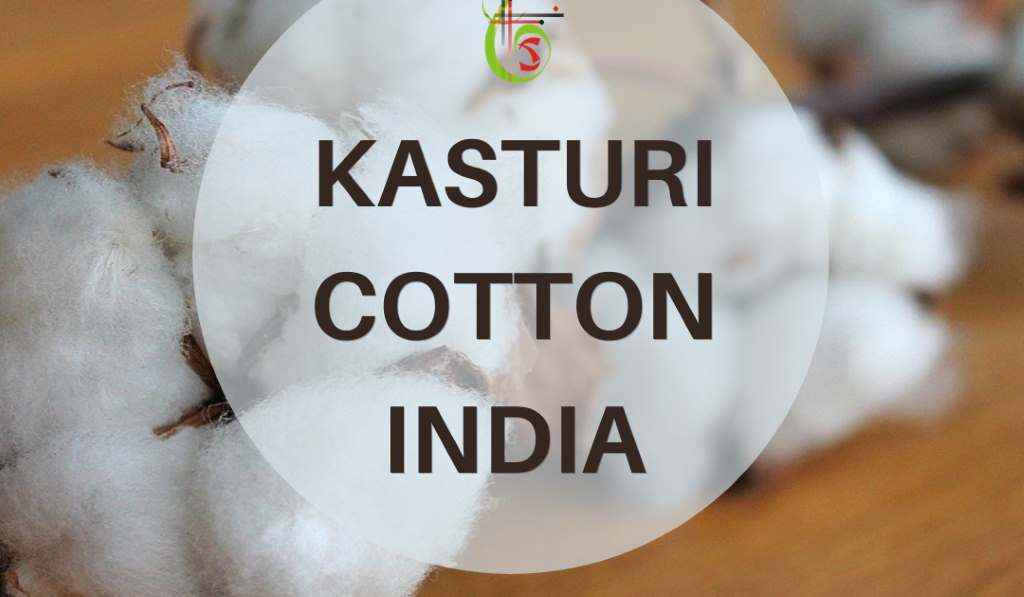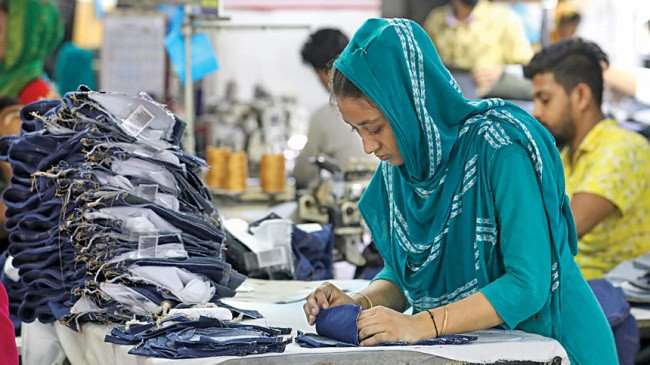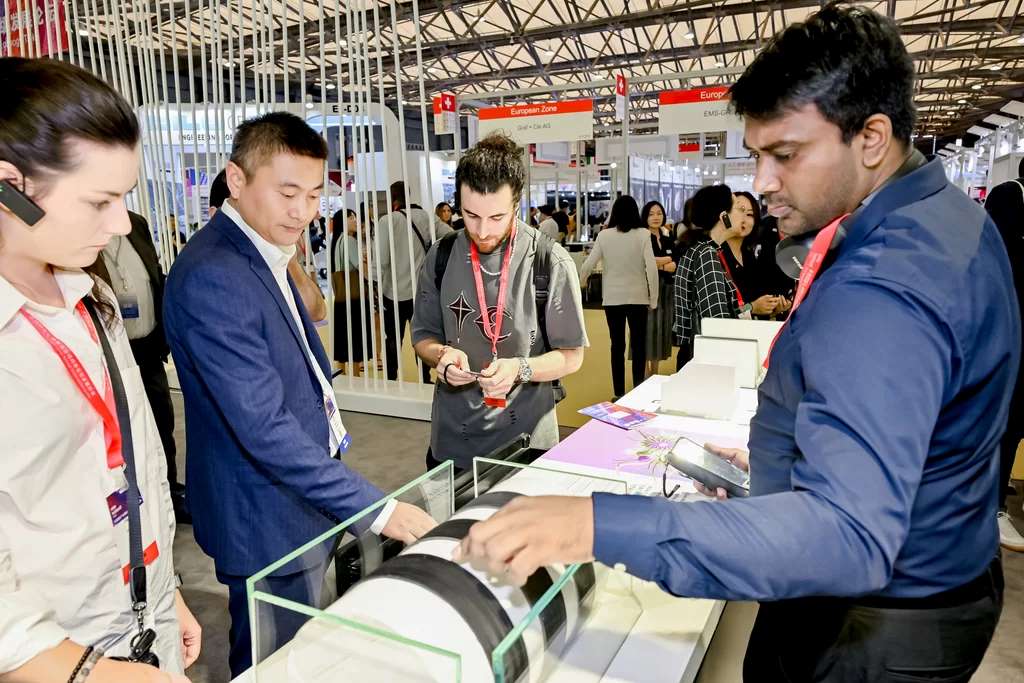FW
Busana Apparel Group, established in 1975, is a global leader in the fashion industry, offering a diverse product line that includes woven dress shirts, women’s tops, bottoms, denim, outerwear, and knits. The company operates 24 manufacturing facilities across Indonesia and Ethiopia, employing over 33,500 workers and producing 70 million units annually. Busana’s production capacity and innovation make it a key player in global fashion.
In a recent development, Busana Apparel joined the International Textile Manufacturers Federation (ITMF) as a corporate member. Christian Schindler, Director General of ITMF, welcomed Busana, highlighting the mutual benefits of this collaboration. ITMF connects producers of fibers, yarns, fabrics, and machinery, fostering an exchange of expertise across the entire textile value chain.
Chairman Maniwanen Marimoetoe of Busana Apparel expressed that membership in ITMF grants access to valuable industry reports, statistics, and surveys. Additionally, it enhances connections with key companies worldwide, supporting Busana's goal of staying competitive and informed in the global market.
By joining ITMF, Busana Apparel is set to strengthen its global presence and enhance its position within the textile industry.
Monforts marked its 140th anniversary with a special celebration at its Monchengladbach, Germany, headquarters, honoring employees and their families. Since its founding in 1884 by August Monforts, the company has been dedicated to advancing textile machinery technology.
Under the theme ‘140 Years of Performance, Innovation, and Partners,’ Monforts plans further celebrations during ITMA Asia + CITME in Shanghai, showcasing its continued leadership in the textile industry.
Over the years, Monforts has transitioned from mechanical and steam-powered machinery to advanced digital solutions. Managing Director Gunnar Meyer emphasized the company’s commitment to digitalization, quality control, and energy efficiency.
Monforts early machines, including cotton fabric nappers, gained international attention at the 1893 Chicago World Fair. By 1897, the company employed 1,200 workers and pioneered semi-automatic tools. Today, it stands as a key player in fabric finishing technology, particularly through its Montex stenters, which are industry standards for processes like heat-setting and coating.
The company’s Advanced Technology Centre, opened in 2013, allows customers to test new textile finishes. Monforts’ production site in Austria, Montex Maschinenfabrik, has been a cornerstone of precision manufacturing for over 40 years, collaborating closely with Monforts’ R&D team.
With a global presence and an estimated 2,000 machines in operation, Monforts continues to innovate and provide durable, high-performance machinery for the textile sector.
In celebration of the 75th anniversary of the People's Republic of China, Hong Kong Polytechnic University (PolyU) and the Hong Kong Special Administrative Region (HKSAR) Government collaborated to showcase modern Chinese fashion. PolyU’s School of Fashion and Textiles (SFT) was invited to design outfits for key female government figures, including the Chief Executive’s wife, five bureau secretaries, and the director of the Chief Executive’s Office. These outfits were worn at the National Day flag-raising ceremony and other celebratory events.
Led by Jin Lam Chi-hin, Associate Professor at SFT, the design team created seven bespoke ‘China-chic’ outfits over a period of three months. The designs reflected the personal styles and professional roles of the officials, incorporating traditional Chinese elements such as knot buttons, Mandarin collars, and jacquard fabrics. The collection merges traditional Chinese culture with modern aesthetics, using innovative tailoring to highlight the elegance of contemporary women.
Jin Lam, a PolyU graduate, has gained recognition for her work, including a commendation from the Times Higher Education Awards Asia 2024. PolyU’s Council Chairman, Lam Tai-fai, emphasized that the project demonstrates the university's leadership in combining Chinese heritage with modern design. He added that PolyU is committed to nurturing fashion talents to reinforce Hong Kong’s position as Asia’s leading fashion hub.
This project aims to inspire young designers to embrace Chinese cultural elements in their work, fostering national pride and advancing oriental aesthetics globally. PolyU’s SFT, with 67 years of history, continues to evolve its curriculum to include modern subjects like AI and sustainability to stay at the forefront of the fashion industry.
Sanjay Garg, President of NITMA, expressed his gratitude to Textile Minister Giri Raj Singh and Commerce Minister Piyush Goyal for extending the Minimum Import Price (MIP) on 13 synthetic knitted fabric HSN codes. The extension includes 8 new HSN codes—60019200, 60041000, 60049000, 60053600, 60053790, 60053900, 60062200, and 60064200—while 5 codes, previously under MIP, continue to be covered. The Directorate General of Foreign Trade (DGFT) has set a minimum import price of $3.50 per kg on these fabrics, effective from September 15 to December 31, 2024.
Earlier this month, a delegation led by Garg met with Textile Minister Singh and senior officials to advocate for MIP on underpriced knitted fabric imports. Garg emphasized the critical role NITMA and other trade bodies, including the All India Knitter Association, Punjab Dyer’s Association, and stakeholders from Surat, played in highlighting the negative impact of cheap imports.
While praising the government’s decision, Garg warned the domestic industry that the fight against underpriced fabric imports is not over, as some entities may shift imports to other HS codes within chapter 60. He urged the industry to remain vigilant, closely monitoring imports beyond chapter 60 as well.
Garg concluded by stating that this MIP measure will significantly curb the import of undervalued synthetic knitted fabrics under the specified HS codes, offering vital relief to the struggling domestic industry.

A survey by Textiles Intelligence highlights optimism amid global challenges in textile industry. The positive buzz has been generated by the release of the ‘Survey of the European Fabric Fairs for Spring/Summer 2025’. The comprehensive survey paints a picture of a dynamic and evolving industry, filled with optimism despite ongoing global challenges. It reveals fabric fairs across Europe, including Munich Fabric Start, Milano Unica, Première Vision Paris, and Texworld Paris, showcased a vibrant and innovative collection of fabrics that highlight sustainability, comfort, and aesthetic appeal.
Optimism and positivity the buzzword
The survey conducted across various fairs reflects a sense of optimism and positivity among exhibitors and visitors.
• Strong attendance and exhibitor participation: The survey revealed robust attendance and exhibitor participation at major European fabric fairs, including Munich Fabric Start, Milano Unica, Première Vision Paris, and Texworld Paris. This strong turnout is a testament to the industry's resilience and its eagerness to connect and collaborate.
• Sustainability takes center stage: A clear trend emerged across all fairs and that is sustainability is no longer just a buzzword; it's a core business principle. A significant emphasis on sustainable materials and manufacturing processes was evident throughout the fairs. Exhibitors showcased an array of eco-friendly fabrics, from recycled materials to organic fibers, demonstrating the industry's commitment to a greener future. This reflects the growing demand for environmentally responsible fashion choices from both consumers and industry professionals.
• Digital innovation drives efficiency: The survey also highlighted the increasing importance of digital technologies in the textile industry. From virtual showrooms to online ordering platforms, digital tools are streamlining processes and enhancing efficiency.
• Cautious optimism prevails: Despite the positive trends, the report also noted a degree of cautious optimism among industry players. Concerns persist about rising costs, supply chain disruptions, and the lingering impact of the COVID-19 pandemic.
• Vibrant color palettes and bold prints: On a lighter note, the survey revealed a vibrant array of color palettes and bold prints for the Spring/Summer 2025 season. Designers are embracing playful and energetic styles, reflecting a desire for optimism and joy in the face of adversity.
• Comfort and functionality: The focus on comfortable and functional fabrics continues to be a strong trend. Fabrics with natural fibers, such as cotton, linen, and wool, alongside innovative blends that offer stretch and moisture-wicking properties, were prominently featured. This trend aligns with the consumer preference for versatile clothing that seamlessly transitions from work to leisure.
Textiles Intelligence analysts noted the European fabric fairs are indicative of a positive trajectory for the Spring/Summer 2025 season. The emphasis on sustainability, comfort, and aesthetics suggests a growing consumer demand for responsible and versatile fashion that empowers personal expression. The integration of technology further strengthens the industry's ability to connect with global audiences and showcase innovations effectively. The report offers a comprehensive overview of the latest fabric trends and insights into the evolving fashion landscape. The focus on sustainability, comfort, and aesthetics aligns with the growing consumer demand for responsible and versatile fashion. With the integration of technology, the industry is poised for further growth and innovation in the coming seasons.

The Kasturi Cotton brand and initiative was launched in India with the ambitious goal of revolutionizing the country's cotton industry and reestablishing it as a premier source of high-quality cotton in the global market.
The initiative is anchored in the recognition that despite being one of the world's largest cotton producers, India's cotton exports have often been hampered by concerns about quality consistency and traceability. Decades of unsustainable farming practices, coupled with the proliferation of genetically modified (GM) cotton varieties, have led to a drop in staple length, contamination issues, and inconsistency in quality. Kasturi Cotton aims to address these challenges head-on by promoting the cultivation and processing of premium, long-staple cotton varieties with robust traceability mechanisms.
Focus on staple Length and traceability
Kasturi Cotton emphasizes the production of Extra-Long Staple (ELS) cotton with a staple length of 35.2 mm and above, far exceeding the current average staple length of Indian cotton which hovers around 27-29 mm. This longer staple length translates to superior yarn quality, enabling the production of finer and more durable textiles.
A key differentiator of Kasturi Cotton is its comprehensive traceability system, which allows buyers to track the cotton's journey from the farm to the finished product. This transparency instills confidence in the authenticity and quality of the cotton, assuring buyers of its premium nature and ethical sourcing. Contamination-free, high uniformity, and excellent spinning performance are its unique selling points. It also promotes eco-friendly farming practices.
Export ambitions
Kasturi Cotton aims to capture a significant share of India's cotton export basket, with a target of reaching 10 per cent of the total exports within the next five years. The focus on premium quality and traceability is expected to drive demand in discerning international markets. Meanwhile, by promoting Kasturi Cotton, India seeks to reclaim its position as a leading supplier of high-quality cotton.
The initiative's emphasis on quality, consistency, and traceability is expected to enhance India's reputation in the global market, leading to increased export volumes and improved price realization.
In fact, to boost exports, Kasturi Cotton has been actively showcased at various international trade fairs, generating considerable interest among global buyers. The initiative has received positive feedback for its focus on quality, traceability, and sustainability. Buyers have expressed their eagerness to procure Kasturi Cotton, recognizing its potential to enhance the quality and reputation of their textile products.
Kasturi Cotton, as an initiative, aims to boost India's cotton sector by focusing on premium quality, traceability, and sustainability. Kasturi Cotton has the potential to redefine global standards and re-establish India as a preferred source of high-value cotton. The initiative's success will not only benefit Indian farmers and exporters but also contribute to the growth and development of the global textile industry.

In a concerning trend that threatens environmental health and sustainability goals, a new report by the Changing Markets Foundation has exposed a disturbing reliance on synthetic textiles among major fashion brands. This 'plastic paralysis' perpetuates the overproduction of cheap, disposable clothing, undermining claims of sustainability and posing a growing health risk.
The report surveyed 50 global apparel companies and revealed a worrying increase in the use of synthetic fibers, particularly polyester, the driving force behind fast fashion. Brands like Boohoo, Lululemon, Shein, and Zara owner Inditex have all reported increased synthetic fiber use, raising alarm bells about the industry's addiction to fossil fuels.
Rising synthetic use a concern
The report highlighted major brands increasing synthetic use. Brands like Boohoo, Lululemon, Shein, and Zara are doubling down on synthetics, contributing to the problem. And polyester is the main culprit, driving fast fashion and shedding harmful microfibers that have been found in human brain tissue, blood, breast milk, and placentas. Its cheap production and versatility have made it a go-to material for brands seeking to churn out massive volumes of trendy clothing at low prices. The environmental toll of synthetic fibers is immense. Derived from fossil fuels, their production contributes to greenhouse gas emissions and climate change. Furthermore, microfibers shed from these materials pollute waterways, harm marine life, and even infiltrate human bodies. Recent findings of microplastics in human brain tissue underscore the urgent need to address this growing health crisis.
What’s even more worrying is corporate secrecy regarding synthetic fiber use has tripled since 2021, with over half of the 50 surveyed companies failing to respond to inquiries. While brands often promote recycled polyester as a sustainable alternative, it mostly comes from plastic bottles, diverting them from a more efficient recycling loop and ultimately ending up in landfills. In fact, the reliance on recycled polyester, primarily from plastic bottles, is criticized as a ‘false solution’ that perpetuates plastic pollution and microplastic shedding.
Corporate secrecy on the rise
Despite mounting evidence of the detrimental effects of synthetic fibers, the report highlights a worrying increase in ‘corporate secrecy’ among fashion brands. Over half of the 50 global apparel companies surveyed failed to respond to requests for information on their use of and commitments to phase out synthetics, a significant jump from previous years. Even brands claiming to maintain steady synthetic fiber volumes often mask their increasing production by expanding their overall output. This lack of transparency hinders efforts to hold brands accountable for their environmental impact.
Brands moving in wrong direction
The report reveals that several major brands are deepening their reliance on synthetic materials. Inditex reported the highest use of synthetics by volume, while Shein boasted of the highest share of synthetics within its total garment production. Boohoo and Lululemon also saw increases in their use of these materials. Some brands promote the use of recycled polyester as a sustainable alternative. However, most recycled polyester comes from plastic bottles, diverting valuable resources from a more efficient closed-loop recycling system and ultimately contributing to plastic pollution.
The report offers several recommendations for the industry.
• Setting clear targets: The Changing Markets Foundation calls on brands to set measurable targets to reduce their use of synthetic fibers, invest in true circularity, and support legislation promoting transparency and sustainability in the industry. Reduce synthetic use by 20 per cent by 2025 and 50 per cent by 2030.
• Address microplastic pollution: Develop strategies to mitigate the impact of microfiber shedding.
• Invest in true circularity: Support textile-to-textile recycling and other innovative solutions.
• Support legislation: Advocate for policies that improve circularity and transparency.
The fashion industry stands at a critical juncture. It's time for brands to break free from ‘plastic paralysis’ and embrace a more sustainable future. By reducing their reliance on synthetic fibers, investing in innovative solutions, and supporting meaningful legislation, brands can contribute to a healthier planet and a more responsible fashion industry.
In 2023, the world’s largest single-country apparel importer, the United States, imported apparels worth $79.3 billion, primarily from Asia, according to a recent report from the US International Trade Commission (USITC). Released by the US trade representative, this report highlights the export competitiveness of key apparel suppliers to the US market.
Bangladesh, Cambodia, India, Indonesia, and Pakistan were among the top 10 apparel exporters to the US in 2023, collectively accounting for 27 per cent of the country’s total apparel imports during the year. These countries are also significant players in the global apparel market.
Between 2013 and 2023, the market shares of major US apparel suppliers witnessed notable shifts. China remained the largest exporter to the US although its share of exports decreased. On the other hand, the share of countries like Vietnam, Bangladesh, Cambodia, and Pakistan increased.
The world’s second-largest apparel exporter, Bangladesh has a strong competitive advantage due to its ability to fulfill large orders of basic garments at low cost, driven by low labor and input costs, as well as duty-free access to major markets outside the US.
Primarily focused on cut, make, and trim production, Cambodia’s apparel sector benefits from foreign direct investment and imports of upstream materials. The country’s growing reputation as a socially responsible manufacturing hub makes it an attractive alternative to China.
India’s apparel industry stands out for its quality and intricate detailing, supported by a vertically integrated production system, further enhancing its competitiveness.
Though a higher-cost source, Indonesia excels in producing high-value, complex garments, such as business attire, outdoor apparel, and athletic wear, adding to its appeal in the global market.
Pakistan’s apparel industry benefits from a robust cotton sector, particularly in high-quality denim production. Its competitive strengths include vertical integration and access to domestic cotton; however, geopolitical concerns remain a challenge for international buyers.
A global leader in iconic apparel, HanesBrands Inc has successfully sold the intellectual property and certain operating assets of its global brand ‘Champion’ to the Authentic Brands Group (ABG).
According to Steve Bratspies, this significant move helps the company streamline and strengthen its operations. It also enables HanesBrands reduce approximately $1 billion in debt by the H2, 2024.
With the sale of the Champion brand, HanesBrands continues to focus on its core businesses and optimising its product offerings. Combined with ongoing financial strategies, this sale positions the company for a more efficient, profitable future, delivering value to shareholders and enhancing its market position in the apparel industry. The company also aims to deliver strong shareholder returns through a targeted revenue growth, improved margins, double-digit earnings per share growth, and continued debt reduction, he adds.
This transaction also aligns with ABG's extensive portfolio of lifestyle and fashion brands, marking a new phase for Champion, which has a long history of success as a sports and athleisure brand. The group is expected to leverage its expertise in brand development and licensing to further expand Champion’s global presence and reach new consumer segments.
At its 45th Annual General Meeting (AGM) held on Sep 29, 2024 at the GKS Cotton Chambers, the Indian Cotton Federation (ICF), formerly known as the South India Cotton Association, urged the Union Government to remove the import duty on cotton. ICF opined, this move will help ensure the growth and competitiveness of the Indian textile industry on the global stage.
During the AGM, J. Thulasidharan, who was re-elected as the President for the 2024-25 term, addressed the challenges faced by the cotton and textile industry. He noted, the past financial year was particularly difficult for the industry due to a significant decline in textile demand. However, cotton yield for 2024-25 is likely to surpass the last season’s output to around 330 lakh bales, he predicted.
Thulasidharan attributed this optimistic forecast to government initiatives, including subsidies and an increased Minimum Support Price (MSP), which have encouraged farmers to focus on improving yield quality and reducing contamination.
However, despite the positive forecast, Thulasidharan raised concerns about the high price of raw cotton in India, which exceeds global prices due to the import duty on cotton. He urged the government to find a solution that would benefit both the industry and farmers, emphasising that securing raw materials at competitive prices and access to affordable financing are essential for the industry's growth.
Thulasidharan also referenced a July meeting of the Textile Advisory Group (TAG), attended by Nishanth Asher, Honorary Secretary, ICF, during which Union Textile Minister Giriraj Singh promised to address key industry concerns. The minister pledged to introduce a new strain of BT cotton to boost yield and work toward achieving price parity with global cotton markets.
Echoing the importance of addressing the challenges facing the industry, Asher emphasised on the need for policy reforms, particularly the removal of the cotton import duty, which has made Indian cotton more expensive than its international counterparts. He explained, eliminating the import duty would level the playing field for India's textile and spinning sectors, enabling them to compete more effectively on the global stage.
Asher also highlighted the growing importance of sustainability in the cotton industry by reiterating ICF’s commitment to continue engaging with policymakers to resolve issues such as price volatility, supply chain disruptions, and trade barriers.
Asher also reaffirmed ICF’s commitment to advocate for policies that support both the industry and farmers. The Federation would also help the Indian textile industry increase its exports, with the aim of reaching $100 billion by 2030, he added.









